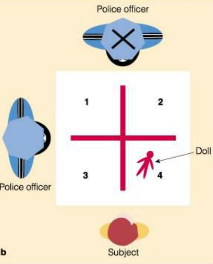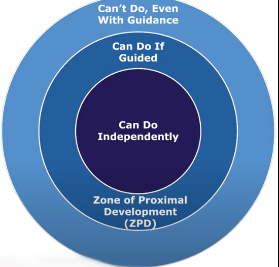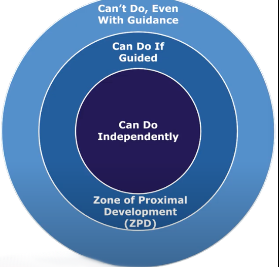Developmental (developing as a learner)
1/35
Earn XP
Description and Tags
Name | Mastery | Learn | Test | Matching | Spaced |
|---|
No study sessions yet.
36 Terms
neuroplasticity
theory that explores the ability of the brain to change and adapt its structure to the environment
strengths of neuroplasticity
supported by case studies showing continuous development or “bounce back” after trauma or injury
supported through brain scans of children through childhood
supported by research into specific professions (ex. taxi driver)
may help in the treatment of those with cognitive impairments, or after trauma
supports idea that learning can occur no matter the age
applicable in animals (increased gray matter in rats with toys)
limitations of neuroplasticity
doesn’t explain why some brain development can occur rapidly, while others take longer, and some brain development just can’t occur (ex. loss of function that persists after stroke)
doesn’t consider biological limits (such as age)
doesn’t account for personal internal motivation for learning new things
relies on correlational research or case studies (low generalisability)
localisation of function
theory that specific areas of the brain perform specific functions
strengths of localisation
supported by case studies where loss of one area corresponds to loss of a specific function
helps understand origin of cognitive impairments
supported by brain scans taken during specific activities
limitations of localisation
areas of the brain may be able to adapt, for ex. if an area is damaged in an accident, other areas may be able to compensate, suggests that localisation is not concrete/ permanent
difficult to study/observe, as brain activity for one function is complex, and unethical to dissect human brains
case studies can’t be generalised
over emphasis on specific regions fails to recognise the interactions between regions, and how that impacts function
reductionist to simplify complex functions into one area
beta bias (ignores sex differences), fails to distinguish between how it may differ between sexes
piaget’s theory of cognitive development
theory that suggests that children learn in specific stages (that are related to their age), and cannot move onto the next without mastering specific tasks in the previous
this learning is done through assimilation (fitting new info into an existing schema) and accommodation (changing an existing schema to fit new info)
there are 4 main stages (sensorimotor, pre-operational, concrete operational, formal operations) SPCF
stages of piaget’s theory of cognitive development
sensorimotor (0-2): learning about world through senses and actions, learning object permanence (knowing an object exists even when hidden)
pre-operational (2-7): still only intuitive thinking (just what is present/apparent), often egocentric (don’t understand other peoples’ POV), often animism (personification of non-living objects)
concrete operational (7-11): understand logical rules, conservatism (amount stays the same despite change in appearance) and reversibility, comprehend diff POVs
formal operations (11+): abstract concepts, deductive reasoning (comparing statements to get logical conclusion), understand hypotheticals
schema
mental framework or representation of ideas
strengths of piaget’s theory
foundational for early research into cognitive development
supports ideas of constructivism: children actively build their knowledge rather than just passively taking it in, and new knowledge builds on previous knowledge (aka. schemas)
major influence on education and parenting
generated lots of research
emphasises that children and adults think differnetly, different cognitive abilities, not just lack of knowledge
limitations of piaget’s theory
small, unrepresentative samples often used
given that experiments are designed by grown adults, often tasks or wording of questions are too complex for young children (like mountain scene as shown by Borke) **common limitation for cognitive developmental research
doesn’t distinguish between competence and performance (what they understand vs what they do)
often cross-sectional NOT longitudinal, hard to see changes over time
timing may be too precise (stages and ages)
under-estimates importance of instruction, creates universal model of development, disregards parents/culture
may overestimate people capable of formal operations, or underestimate abilities of infants (adult ability may be dependent on formal education)
general problems with studying cognitive development
need an age-appropriate task that’s not too complicated, but measures what you want to observe
need to be able to test their knowledge without accidentally teaching them it instead
often difficult or expensive to conduct longitudinal studies with young children
need balance between having a lab setting with controlled variables, and an authentic environment where children can act normally (not have test anxiety)
another study to potentially critique piagets (police doll)
hughes police doll study
set-up: model with 2 intersecting walls in a t-shape, with 2 policemen at the end of two of the walls (such that there is one section where they cannot “see”)
children aged 3-5 asked to place a doll where the policemen cannot see it
90% of children placed it correctly, where policemen couldn’t see it, even if THEY themselves could see the doll
suggests that children are not egocentric, and can see other POVs when given an age-appropriate task (like hide and go seek)

another study to critique piagets study (recreation with 50-70+ yr old adults)
study done by McDonald
retested 3 mountain task with 50-70+ year old adults
mistakes made were often “nearly correct” or egotistical despite participants understanding that they needed to look from a diff POV
suggests that the task is too hard (hard to distinguish between photos taken at 36 degrees), and poor performance may be from intellectual stress-induced reversion (where when the sensory system is overloaded, they revert to default, or the option they know exists (their own POV))
suggests that task should be simplified, and test anxiety/ performing under pressure should be considered
vygotsky’s theory
theory that cognitive development is based on interaction with others, specifically more knowledgeable otehrs (MKOs) who teach things inside the zone of proximal development (ZPD) through scaffolding

more knowledgeable others (MKOs)
an individual who has more experience and information with the ability to teach someone else content inside the ZPD (ex. teacher, parent, adult, skilled peer)
zone of proximal development (ZPD)
space between what a child can learn on their own, and what is beyond their reach. domain of things they can learn with guidance from an MKO

scaffolding
process through which difficult concepts are broken down with the help of an MKO, specifically geared towards the individual child
types of speech in vygotsky’s theory
social: external communication with others (2)
private: speaking out loud to yourself, intellectual function (3)
inner: silent mind’s thoughts, self regulating (7)
strengths of vygotsky’s theory
scaffolding has been instrumental in education (well accepted in schools)
theoretical basis of collaborative learning, such as in groups
emphasises importance of social interaction (which is lacking in PIaget’s)
limitations of vygotsky’s theory
too much emphasis on social interaction (lots can be learned independently/internally)
lack of empirical evidence to support the theory
ideas of specific parts of speech (ex. social vs inner vs private) are hard to measure/ observe in studies
lacks cross-cultural validity (ex. scaffolding may not be effective for all cultures, observation and imitation may be more effective in certain cultures)
neglects other factors that influence learning like internal motivation, joy or frustration
similarities between vygotsky and piaget’s theories
both suggest that children are curious and require active participation in learning
both fundamental concepts widely used in schooling and parenting (viewed as complementary rather than conflicting)
both don’t consider biological factors such as hormones
both recognise the cognitive limitations of children (idea that some things are just too complex for children, they have different capacity to learn compared to adults)
both use ideas of constructivism (new knowledge building on past knowledge)
differences between vygotsky and piaget’s theories
Piaget
| Vygotsky
|
similarities between neuroplasticity and localisation
both connect the brains structures with function
studied through brain imaging techniques such as MRIs
both important when studying the development of children’s minds, as well as progress after traumatic brain injuries
both can vary depending on the individual
simple theories to explain complex neurological processes
differences between neuroplasticity and localisation
Neuroplasticity
| Localisation
|
similarities between vygotsky and SCLT
both require a more experienced model to facilitate learning
suggest that social interaction is crucial in child development
both fundamental in schooling and parenting
suggest that the relationship between the teacher and child impacts learning
differences between vygotsky and SCLT
Vygotsky
| SCLT
|
social cognitive learning theory
A theory that suggests behaviour is modelled by other members of a group and acquired through observation and/or imitation based on consequences (or lack of consequences) of a behaviour
factors relating to social cognitive learning theory
if/ when they copy a behaviour is based off of 4 factors
attention: models who are more attractive are more likely to be copied (personal relationship, in-group, consistency)
retention: can have immediate or delayed imitation
motivation: anticipated reawrd/ punishment, vicarious reinforcement, emotional state
potential: self-efficacy, belief that they can
strengths of social cognitive learning theory
easy to test (for ex. in a lab environment)
supported by empirical studies
practical applications (parenting, schools)
limitations of social cognitive learning theory
not realistic, often artificial lab environments (can’t create a personal relationship/ environment, often behaviours learned over long period of time)
doesn’t explain why some people don’t learn thorugh observation
not applicable for all types of learning (ex. soft skills cannot be learned through observation, like teamwork, critical thinking)
doesn’t account for differences between observational learning in children vs. adults
vague/ loosely organised (unclear how much certain factors influence the learning, ex. how important is the personal relationship with model?)
disregards biological/ hormonal factors that influence learning
enculturation
process through which cultural values and behaviours (such as norms) are learned and maintained
types of enculturation and how does it occur
3 types of enculturation:
vertical: from parents/elders to children
horizontal: through peers
oblique: social institutions (school, maybe media)
occurs through:
direct teaching, participatory learning, or observational learning
sociocultural approach to learning
explores how the interactions with other people and the external factors in the surrounding environment change behaviour
specifically in development: how others impact learning
ex. either through observing others (SCLT) or guidance from others (Vygotsky’s MKOs)
biological approach to learning
explores how physiological factors influence the brain, and thus behaviour and cognition
specifically in development: how the brain develops, and the resulting structure and/or function
ex. localisation / neuroplasticity
cognitive approach to learning
explores how the mind processes, stores, uses and recalls information
specifically in development: how the brain conceptualises and learns new cognitive schemas/ information